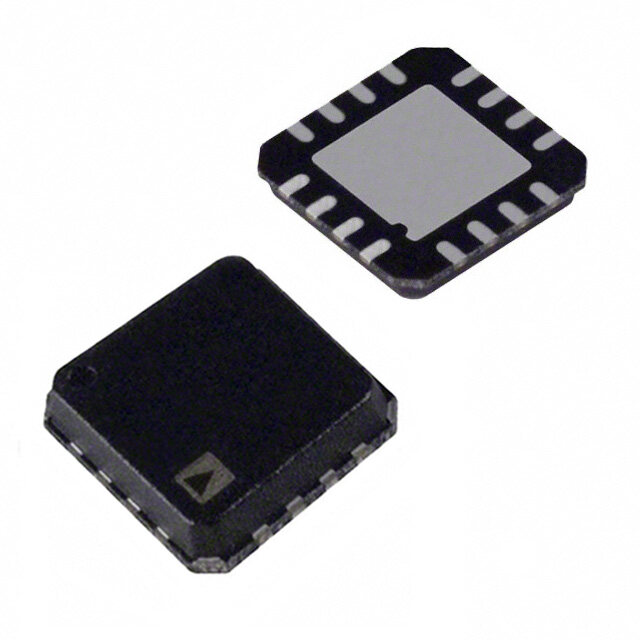ICGOO在线商城 > 集成电路(IC) > PMIC - 稳压器 - DC DC 开关稳压器 > BD1482EFJ-E2
- 型号: BD1482EFJ-E2
- 制造商: ROHM Semiconductor
- 库位|库存: xxxx|xxxx
- 要求:
| 数量阶梯 | 香港交货 | 国内含税 |
| +xxxx | $xxxx | ¥xxxx |
查看当月历史价格
查看今年历史价格
BD1482EFJ-E2产品简介:
ICGOO电子元器件商城为您提供BD1482EFJ-E2由ROHM Semiconductor设计生产,在icgoo商城现货销售,并且可以通过原厂、代理商等渠道进行代购。 BD1482EFJ-E2价格参考¥10.17-¥12.75。ROHM SemiconductorBD1482EFJ-E2封装/规格:PMIC - 稳压器 - DC DC 开关稳压器, 可调式 降压 开关稳压器 IC 正 0.923V 1 输出 2A 8-SOIC(0.154",3.90mm 宽)裸露焊盘。您可以下载BD1482EFJ-E2参考资料、Datasheet数据手册功能说明书,资料中有BD1482EFJ-E2 详细功能的应用电路图电压和使用方法及教程。
BD1482EFJ-E2 是罗姆半导体(Rohm Semiconductor)推出的一款 PMIC(电源管理集成电路),属于 DC-DC 开关稳压器类别。该型号的应用场景主要集中在需要高效、低功耗和小型化电源解决方案的便携式电子设备以及工业应用中。以下是其主要应用场景: 1. 便携式消费电子产品 - 智能手机和平板电脑:BD1482EFJ-E2 的高效率和小尺寸设计非常适合为手机和平板电脑中的各种模块供电,例如处理器、显示屏和其他外围组件。 - 可穿戴设备:如智能手表、健康追踪器等,这些设备对电池寿命要求极高,而 BD1482EFJ-E2 的低静态电流特性可以有效延长电池续航时间。 - 蓝牙耳机和TWS耳机:小巧且高效的电源管理能力使其成为 TWS 耳机充电盒的理想选择。 2. 物联网(IoT)设备 - 传感器节点:在智能家居、工业自动化等领域,BD1482EFJ-E2 可为低功耗传感器提供稳定电源,支持长时间运行。 - 无线通信模块:如 Zigbee、LoRa 或 NB-IoT 模块,这款 IC 能够满足其对电压转换效率的要求。 3. 工业控制与自动化 - 嵌入式系统:在工业计算机、PLC(可编程逻辑控制器)或数据采集系统中,BD1482EFJ-E2 可以为微控制器和接口电路提供稳定的电源。 - 电机驱动器:为小型电机驱动器中的控制单元供电,确保高效运作。 4. 汽车电子 - 车载信息娱乐系统:虽然主要用于非汽车领域,但其性能也适用于一些简单的车载子系统,如后视摄像头或音响放大器。 - 高级驾驶辅助系统(ADAS)传感器:为雷达或超声波传感器提供电源支持。 5. 医疗设备 - 便携式医疗仪器:如血糖仪、脉搏血氧仪等,BD1482EFJ-E2 的低功耗特点有助于减少设备的能耗,延长使用时间。 核心优势: - 高效率:采用先进的开关技术,提高能量转换效率。 - 低静态电流:降低待机功耗,延长电池寿命。 - 紧凑封装:适合空间受限的设计。 - 宽输入电压范围:适应多种电池供电场景。 综上所述,BD1482EFJ-E2 广泛应用于需要高效电源管理的小型化、低功耗设备中,特别适合便携式电子设备和物联网相关产品。
| 参数 | 数值 |
| 产品目录 | 集成电路 (IC) |
| 描述 | IC REG BUCK SYNC ADJ 2A 18HTSOP |
| 产品分类 | |
| 品牌 | Rohm Semiconductor |
| 数据手册 | |
| 产品图片 |
|
| 产品型号 | BD1482EFJ-E2 |
| PWM类型 | 电流模式 |
| rohs | 无铅 / 符合限制有害物质指令(RoHS)规范要求 |
| 产品系列 | - |
| 供应商器件封装 | 8-HTSOP-J |
| 其它名称 | BD1482EFJ-E2CT |
| 包装 | 剪切带 (CT) |
| 同步整流器 | 是 |
| 安装类型 | 表面贴装 |
| 封装/外壳 | 8-SOIC(0.154",3.90mm 宽)裸焊盘 |
| 工作温度 | -40°C ~ 85°C |
| 标准包装 | 1 |
| 电压-输入 | 4.2 V ~ 18 V |
| 电压-输出 | 0.923 V ~ 12.6 V |
| 电流-输出 | 2A |
| 类型 | 降压(降压) |
| 输出数 | 1 |
| 输出类型 | 可调式 |
| 频率-开关 | 380kHz |






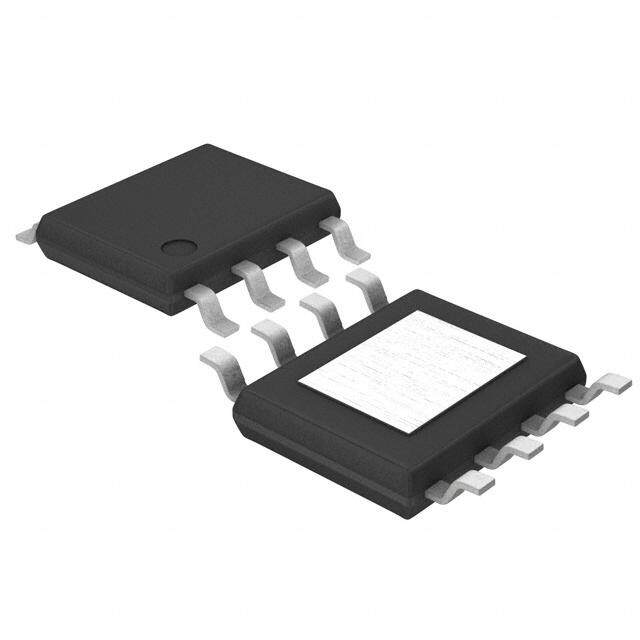

- 商务部:美国ITC正式对集成电路等产品启动337调查
- 曝三星4nm工艺存在良率问题 高通将骁龙8 Gen1或转产台积电
- 太阳诱电将投资9.5亿元在常州建新厂生产MLCC 预计2023年完工
- 英特尔发布欧洲新工厂建设计划 深化IDM 2.0 战略
- 台积电先进制程称霸业界 有大客户加持明年业绩稳了
- 达到5530亿美元!SIA预计今年全球半导体销售额将创下新高
- 英特尔拟将自动驾驶子公司Mobileye上市 估值或超500亿美元
- 三星加码芯片和SET,合并消费电子和移动部门,撤换高东真等 CEO
- 三星电子宣布重大人事变动 还合并消费电子和移动部门
- 海关总署:前11个月进口集成电路产品价值2.52万亿元 增长14.8%

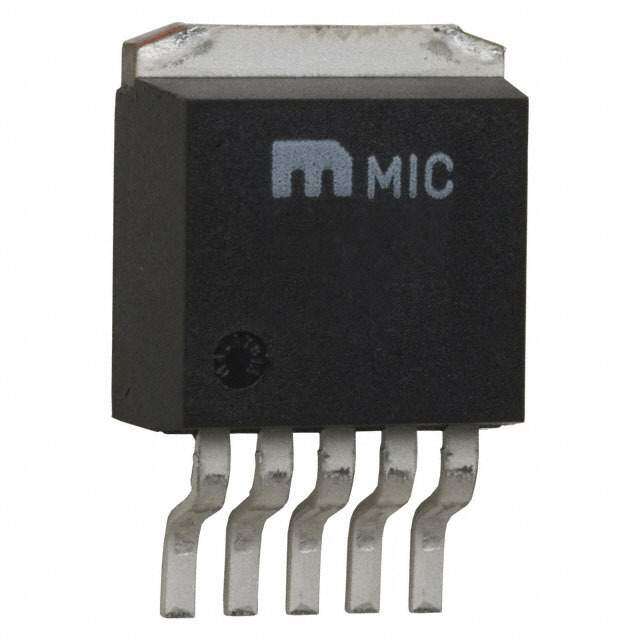
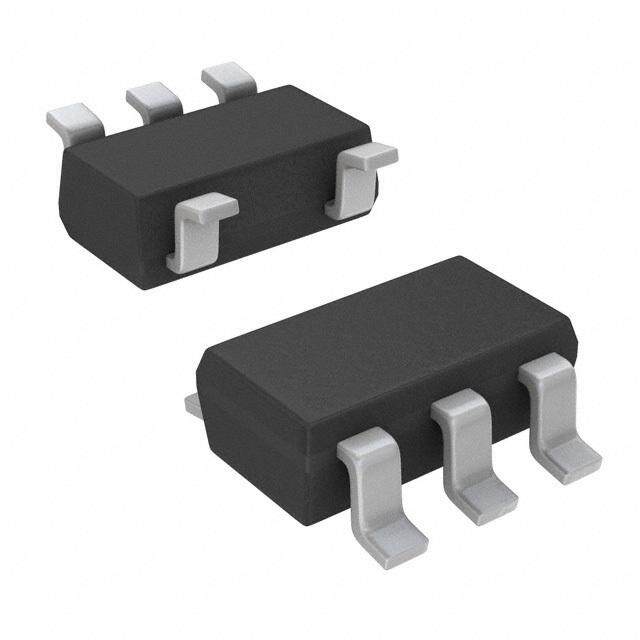
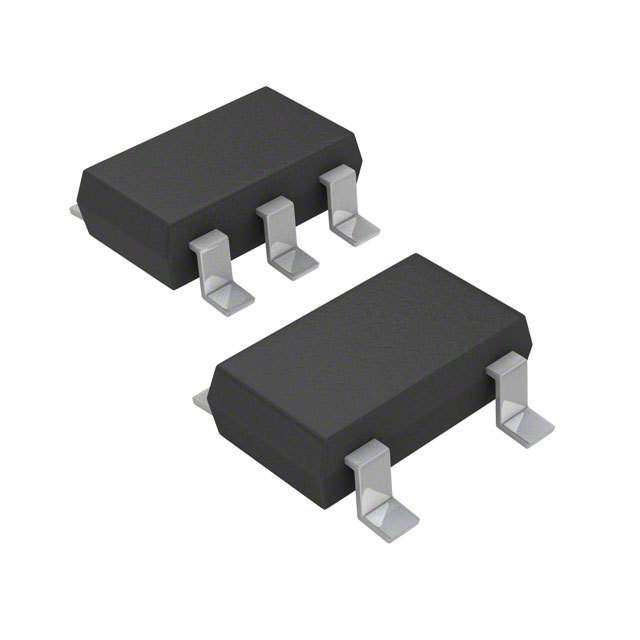
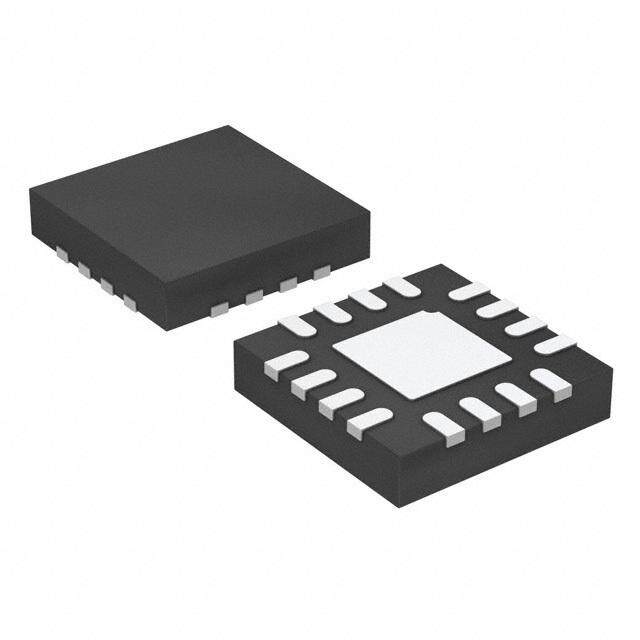


PDF Datasheet 数据手册内容提取
Datasheet 4.2V to 18V, 2A 1ch Synchronous Buck Converter integrated FET BD1482EFJ ●General Description ●Key Specifications The BD1482EFJ is a synchronous step-down Input voltage range: 4.2V to 18V switching regulator that integrates 2 low ON-resistance Output voltage range: 0.923V to (Vin×0.7)V N-channel MOSFETs. It achieves 2A continuous Output current: 2.0A (Max.) output current over a wide input supply range. Current Switching Frequency 380kHz(Typ.) mode operation provides fast transient response and Hi-side FET On-resistance: 0.15Ω(Typ.) easy phase compensation. Lo-side FET On-resistance: 0.13Ω(Typ.) Standby current: 15μA (Typ.) ●Features Operating temperature range: -40℃ to +85℃ Low ESR Output Ceramic Capacitors are Available ●Package (Typ.) (Typ.) (Max.) Low Standby Current during Shutdown Mode HTSOP-J8 4.90mm x 6.00mm x 1.00mm 380 kHz Fixed Operating Frequency Feedback voltage 0.923V ± 1.5%(Ta=25℃), 0.923V ± 2.0%(Ta=-25℃ to 85℃) Protection Circuits Under Voltage Lockout Protection Thermal Shutdown Over Current Protection ●Applications Distributed Power System Pre-Regulator for Linear Regulator HTSOP-J8 ●Typical Application Circuit C_PC 3300pF R_PC 7.5kΩ R_DW C_SS 15kΩ 0.1μF P R_UP SS EN COM FB 39kΩ Thermal Pad (to be shorted to GND) BST VIN SW GND L VIN 12V VOUT 3.3V 10µH C_VC1 C_CO1 10μF 20μF R_BS Ω22 C_BS 0.1μF ※R_BS protect from VIN-BST short destruction. Fig.1 Typical Application Circuit ○Product structure:Silicon monolithic integrated circuit ○This product is not designed protection against radioactive rays. www.rohm.com TSZ02201-0333AD100130-1-2 ©2012 ROHM Co., Ltd. All rights reserved. 1/17 06.Aug.2012 Rev.001 TSZ22111・14・001
BD1482EFJ Datasheet ●Pin Configuration ●Block Diagram (TOP VIEW) SS EN COMP FB BST VIN SW GND Fig.2 Pin Configuration Fig.3 Block Diagram ●Pin Description Pin No. Pin name Function 1 BST High-Side Gate Drive Boost Input 2 VIN Power Input 3 SW Power Switching Output 4 GND Ground 5 FB Feed Back Input 6 COMP Compensation Node 7 EN Enable Input 8 SS Soft Start Control Input ●Block Operation ・VREG A block to generate constant-voltage for DC/DC boosting. ・VREF A block that generates internal reference voltage of 5.1 V (Typ.). ・TSD/UVLO TSD (Thermal shutdown)/UVLO (Under Voltage Lockout) protection block. The TSD circuit shuts down IC at high temperature. The UVLO circuit shuts down the IC when the VIN is Low Voltage. ・Error amp block (ERR) This is the circuit to compare the reference voltage and the feedback voltage of output voltage. The COMP pin voltage resulting from this comparison determines the switching duty. At the time of startup, since the soft start is operated by the SS pin voltage, the COMP pin voltage is limited to the SS pin voltage. ・Oscillator block (OSC) This block generates the oscillating frequency. ・SLOPE block This block generates the triangular waveform from the clock created by OSC. Generated triangular waveform is sent to the PWM comparator. ・PWM block The COMP pin voltage output by the error amp is compared to the SLOPE block's triangular waveform to determine the switching duty. Since the switching duty is limited by the maximum duty ratio which is determined internally, it does not become 100%. ・DRV block A DC/DC driver block. A signal from the PWM is input to drive the power FETs. ・OCP block OCP (Over Current Protection) block. The current which flowed into FET is detected and OCP starts at 3.5A (min). After OCP, switching is turned off and SS capacitor is discharged. OCP is not latch type but auto restart. ・Soft start circuit Since the output voltage rises gradually while restricting the current at the time of startup, it is possible to prevent the output voltage overshoot or the rush current. www.rohm.com TSZ02201-0333AD100130-1-2 ©2012 ROHM Co., Ltd. All rights reserved. 2/17 06.Aug.2012 Rev.001 TSZ22111・15・001
BD1482EFJ Datasheet ●Absolute Maximum Ratings(Ta = 25℃) Parameter Symbol Ratings Unit Supply Voltage VIN 20 V Switch Voltage VSW 20 V Power Dissipation for HTSOP-J8 Pd 3760 *1 mW Package thermal resistance θja *2 θja 29.27 ℃/W Package thermal resistance θjc *2 θjc 3.75 ℃/W Operating Temperature Range Topr -40 to +85 ℃ Storage Temperature Range Tstg -55 to +150 ℃ Maximum Junction Temperature Tjmax 150 ℃ BST Voltage VBST VSW+7 V EN Voltage VEN 20 V All other pins VOTH 20 V *1 Derating in done 30.08 mW/℃ for operating above Ta≧25℃(Mount on 4-layer 70.0mm×70.0mm×1.6mm board) *2 Mount on 4-layer 50mm x 30mm x 1.6mm application board ●Operating Ratings (Ta= -40 to 85℃) Ratings Parameter Symbol Unit Min Typ Max Supply Voltage VIN 4.2 12 18 V SW Voltage VSW -0.5 - 18 V Output current ISW3 - - 2 A Output voltage range VRANGE 0.923 - VIN x 0.7 V ●Electrical Characteristics (Unless otherwise specified VIN=12V Ta=25℃) Limits Parameter Symbol Unit Conditions Min Typ Max Error amplifier block FB input bias current IFB - 0.02 2 µA Feedback voltage1 VFB1 0.910 0.923 0.938 V Voltage follower Feedback voltage2 VFB2 0.906 0.923 0.942 V Ta=-25℃ to 85℃ SW block High-side FET On-resistance RONH - 0.15 - Ω ISW= -0.8A Low-side FET On-resistance RONL - 0.13 - Ω ISW= 0.8A VIN= 18V, High/Low-side FET Leak current ILEAKN - 0 10 µA VSW = 0V / 18V Switch Current Limit ILIMIT3 3.5 - - A Maximum duty cycle MDUTY - 90 - % VFB= 0V General Enable Sink current IEN 45 90 135 µA VEN= 12V Enable Threshold voltage VEN 0.6 1.2 1.4 V Under Voltage Lockout threshold VUVLO 3.5 3.75 4.0 V VIN rising Under Voltage Lockout Hysteresis VHYS - 0.3 - V Soft Start Current ISS 5 10 15 µA VSS= 0 V Soft Start Time TSS - 22 - ms CSS= 0.1 µF Operating Frequency FOSC 300 380 460 kHz Circuit Current ICC - 1.2 3 mA VFB= 1.5V, VEN= 12V Standby Current IQUI - 15 27 µA VEN= 0V www.rohm.com TSZ02201-0333AD100130-1-2 ©2012 ROHM Co., Ltd. All rights reserved. 3/17 06.Aug.2012 Rev.001 TSZ22111・15・001
BD1482EFJ Datasheet ●Typical Performance Curves (Unless otherwise specified, VIN= 12V Ta = 25℃) Fig.4 Circuit Current Fig.5 Stand by current (No switching) (IC not active) 0.945 0.935 ] V [ e g a olt 0.925 V k c a b d e 0.915 e F 0.905 -40 -20 0 20 40 60 80 TEMP[℃] Fig.6 Input Bias Current Fig.7 Feedback voltage www.rohm.com TSZ02201-0333AD100130-1-2 ©2012 ROHM Co., Ltd. All rights reserved. 4/17 06.Aug.2012 Rev.001 TSZ22111・15・001
BD1482EFJ Datasheet ●Typical Performance Curves (Unless otherwise specified, VIN= 12V Ta = 25℃) (Continued) 390 385 380 z) H k C ( 375 S O F 370 365 360 -40 -20 0 20 40 60 80 TEMP (°C) Fig.8 Hi,Low-Side Fig.9 Operating Frequency On-re sistance 95 90 85 80 %] 75 y[ c n70 e ci Effi65 60 55 50 0 500 1000 1500 2000 Io[mA] Fig.10 STEP Down Efficiency Fig.11 OverCurrent Protection (VIN= 12V VOUT= 3.3V L=10µH) (VOUT is shorted to GND) www.rohm.com TSZ02201-0333AD100130-1-2 ©2012 ROHM Co., Ltd. All rights reserved. 5/17 06.Aug.2012 Rev.001 TSZ22111・15・001
BD1482EFJ Datasheet ●Typical Performance Curves (Unless otherwise specified, VIN= 12V Ta = 25℃) (Continued) VOUT-MAX: +37.5mV VOUT VOUT: 50mV/div VOUT-MIN: -43.5mV IOUT: 1.0A/div IOUT 500usec/div Fig.13 Transient Response Fig.12 Soft Start Time (VIN= 12V VOUT= 3.3V L= 10µH Cout =22µF Iout= 0.2-1.0A ) VOUT-MAX: +87mV ⊿: +22.8mV VOUT VOUT VOUT: 100mV/div VOUT: 20mV/div VOUT-MIN: -98mV IOUT: 1.0A/div IOUT 500usec/div Fig.14 Output Ripple Voltage Fig.15 Transient Response (VIN= 12V VOUT= 3.3V L= 10µH Cout =22µF Iout= 1.0A ) (VIN= 12V VOUT= 3.3V L= 10µH Cout =22µF Iout= 0.2-2.0A) www.rohm.com TSZ02201-0333AD100130-1-2 ©2012 ROHM Co., Ltd. All rights reserved. 6/17 06.Aug.2012 Rev.001 TSZ22111・15・001
BD1482EFJ Datasheet ●Typical Performance Curves (Unless otherwise specified, VIN= 12V Ta = 25℃) (Continued) EN: 10V/div EN ⊿: +23.2mV VOUT: 1.0V/div TSS VOUT VOUT 22ms VOUT: 20mV/div IOUT: 1.0A/div IOUT IOUT: 1.0A/div IOUT 1usec/div 5msec/div Fig.16 Output Ripple Voltage Fig.17 Start Up waveform (VIN= 12V VOUT= 3.3V L= 10µH Cout =22µF Iout= 2.0A ) (VIN= 12V VOUT= 3.3V L= 10µH CSS= 0.1µF) www.rohm.com TSZ02201-0333AD100130-1-2 ©2012 ROHM Co., Ltd. All rights reserved. 7/17 06.Aug.2012 Rev.001 TSZ22111・15・001
BD1482EFJ Datasheet ●Application Information Typical Application Circuit C_PC 3300pF R_DW R_PC 15kΩ C_SS 0.1μF 7.5kΩ R_UP P SS EN COM FB 39kΩ Thermal Pad (to be shorted to GND) BST VIN SW GND L VIN 12V VOUT 3.3V 10µH C_VC1 C_CO1 10μF 20μF R_BS Ω22 C_BS 0.1μF ※R_BS protect from VIN-BST short destruction. Fig.18 Application Circuit Symbol Maker Part No Input capacitor C_VC1 TDK C3225JB1E106K 10µF/25V Output capacitor C_CO1 TDK C3216JB1C106M 10µF/16V Inductor L TDK SLF10165-100M3R8 10µH/3.8A www.rohm.com TSZ02201-0333AD100130-1-2 ©2012 ROHM Co., Ltd. All rights reserved. 8/17 06.Aug.2012 Rev.001 TSZ22111・15・001
BD1482EFJ Datasheet Selecting Application Components (1) Output LC filter constant selection (Buck Converter) The Output LC filter is required to supply constant current to the output load. A larger value inductance at this filter results in less inductor ripple current (∆IL) and less output ripple voltage. However, the larger value inductors tend to have less fast load transient-response, a larger physical size, a lower saturation current and higher series resistance. A smaller value inductance has almost opposite characteristics above.So Choosing the Inductor ripple current (∆IL) between 20 to 40% of the averaged inductor current (equivalent to the output load current) is a good compromise. IOUTMAX + IL /2 IL should not reach VIN the rated value level ILR VOUT L Inductor averaged current COUT t Fig.19 Fig.20 Setting ∆IL = 30% x Averaged Inductor current (2A) = 0.6 [A] 1 L = VOUT (VIN - VOUT) x = 10µ [H] VIN x FOSC x ∆IL Where VIN= 12V, VOUT= 3.3V, FOSC= 380 kHz, ; FOSC is a switching frequency Also the inductor should have the higher saturation current than IOUTMAX + ∆IL / 2. The output capacitor COUT affects the output ripple-voltage. Choose the large capacitor to achieve the small ripple-voltage enough to meet the application requirement. Output ripple voltage ∆VRPL is calculated by the following equation. 1 ∆VRPL = ∆IL ( RESR + ) [V] 8x COUT x FOSC Where RESR is a parasitic series resistance in output capacitor. Setting COUT = 20µF, RESR = 10mΩ ∆VRPL = 0.6 x (10m + 1 / (8 x 20u x 380k)) = 15.8mV (2) Loop Compensation Choosing compensation capacitor CCMP and resistor RCMP The current-mode buck converter has 2-poles and 1-zero system. Choosing the compensation resistor and capacitor is important for a good load-transient response and good stability. The example of DC/DC converter application bode plot is shown below. The compensation resistor RCMP will decides the cross over frequency FCRS (the frequency that the total DC-DC loop-gain falls to 0dB). Setting the higher cross over frequency achieves good response speed, however less stability. While setting the lower cross over frequency shows good stability but worse response speed. The 1/10 of switching frequency for the cross over frequency shows a good performance at most applications. www.rohm.com TSZ02201-0333AD100130-1-2 ©2012 ROHM Co., Ltd. All rights reserved. 9/17 06.Aug.2012 Rev.001 TSZ22111・15・001
BD1482EFJ Datasheet ( i ) Choosing phase compensation resistor RCMP The compensation resistor RCMP can be on following formula. 2πx VOUT x FCRS x COUT RCMP = [Ω] VFB x GMP x GMA Where VOUT ; Output voltage, FCRS ; Cross over frequency, COUT ; Output Capacitor, VFB ; internal feedback voltage (0.923V(TYP)), GMP ; Current Sense Gain (7.8A/V(TYP)) , GMA ; Error Amplifier Trans-conductance (300µA/V(TYP)) Setting VOUT= 3.3V, FCRS= 38kHz, COUT= 20µF; 2πx 3.3 x 38k x 20u RCMP = = 7.30k ~= 7.5k [Ω] 0.923 x 7.8 x 300u ( ii ) Choosing phase compensation capacitor C CMP For the stability of DC/DC converter, canceling the phase delay that derives from output capacitor COUT and resistive load ROUT by inserting the phase advance. The phase advance can be added by the zero on compensation resistor RCMP and capacitor CCMP. Making Fz= FCRS / 6 gives a first-order estimate of CCMP. 1 Compensation Capacitor CCMP= [F] 2π x RCMP x Fz Setting Fz= FCRS/6 = 6.3kHz; 1 Compensation Capacitor CCMP= = 3.54n ~= 3.3n [F] 2π x 7.5k x 6.3k However, the best values of zero and FCRS are different between applications. After calculation above formula and confirmation actual application, please decide values finally. ( iii ) The condition of the loop compensation stability The stability of DC/DC converter is important. To secure the operating stability, please check the loop compensation has the enough phase-margin. For the condition of loop compensation stability, the phase-delay must be less than 150 degree where Gain is 0 dB. Feed forward capacitor CRUP boosts phase margin over a limited frequency range and is sometimes used to improve loop response. CRUP will be more effec tive if RUP >> RUP||RDW (a) VOUT A Gain [dB] RUP CRUP GBW(b) FB COMP 0 - FCRS F RDW + PHASE 0 RCMP -90° 0.923V -90 CCMP PHASE MARGIN -180° -180 F Fig.21 Fig.22 (3) Design of Feedback Resistance constant Set the feedback resistance as shown below. 0.923V R1 + R2 V VOUT = R2 0.923 [V] OUT R1 + ERR - FB R2 Fig.23 www.rohm.com TSZ02201-0333AD100130-1-2 ©2012 ROHM Co., Ltd. All rights reserved. 10/17 06.Aug.2012 Rev.001 TSZ22111・15・001
BD1482EFJ Datasheet Soft Start Function An adjustable soft-start function to prevent high inrush current ERRAMP ↓ ISS 10µA dTuhrein sgo sftt-asrtta-rutp t imis ea visa islaebt lbey. the external capacitor connected to ↓ COMP SS SS pin. + The soft start time is given by; + C - SS TSS [s] = 2.2 x Css / ISS Setting CSS= 0.1µF; Fig.24 TSS= 2.2 x 0.1µ / 10µ = 22 [ms] Please confirm the overshoot of the output voltage and inrush current when deciding the SS capacitor value. EN Function VIN The EN terminal control IC’s shut down. Leaving EN terminal open makes IC shutdown. EN 124 kΩ(typ.) To start the IC, EN terminal should be connected to VIN or the other power source output. When the EN voltage exceed 1.2V (typ.), the IC start operating. The IC also has the hysteresis voltage 0.2V (typ.) of EN when EN voltage falls down. 254 kΩ(typ.) (Attention1) Chattering happens if standing lowering speed is slow when standing of EN pin is lowered. The reverse current in which the input side and the pressure operation are done from the output side is generated when REN chattering operates with the output voltage remained, and there is a case to destruction. EN Please set to stand within 100us when you control ON/OFF by the EN signal. This necessity doesn't exist when EN pin is connected with ON/OFF VIN and EN is not controlled. Signal The control by open drain MOSFET shown in a left chart is recommended. (Attention 2) In case the output voltage is used in a setting of more than 5V, Fig.25 when EN signal is turned off, please start up EN again after output voltage is discharged enough. If EN is turned on although output voltage isn’t discharged enough, BST circuit doesn’t operate normally. As the result, the IC is not operated, in the worst case, it is destroyed. www.rohm.com TSZ02201-0333AD100130-1-2 ©2012 ROHM Co., Ltd. All rights reserved. 11/17 06.Aug.2012 Rev.001 TSZ22111・15・001
BD1482EFJ Datasheet Layout Pattern Consideration Two high pulsing current flowing loops exist in the buck regulator system. The first loop, when FET is ON, starts from the input capacitors, to the VIN terminal, to the SW terminal, to the inductor, to the output capacitors, and then returns to the input capacitor through GND. The second loop, when FET is OFF, starts from the low FET, to the inductor, to the output capacitor, and then returns to the low FET through GND. To reduce the noise and improve the efficiency, please minimize these two loop area. Especially input capacitor, output capacitor and low FET should be connected to GND plain. PCB Layout may affect the thermal performance, noise and efficiency greatly. So please take extra care when designing PCB Layout patterns. VIN L VOUT CIN FET COUT Fig.26 Current loop in B uck regulator system ・The thermal Pad on the back side of IC has the great thermal conduction to the chip. So using the GND plain as broad and wide as possible can help thermal dissipation. And a lot of thermal via for helping the spread of heat to the different layer is also effective. ・The input capacitors should be connected as close as possible to the VIN terminal. ・When there is unused area on PCB, please arrange the copper foil plain of DC nodes, such as GND, VIN and VOUT for helping heat dissipation of IC or circumference parts. ・To avoid the noise influence from AC combination with the other line, keep the switching line such as SW not extend as much as possible, and trace shortly and thickly to coil. ・Keep sensitive signal traces such as trace connected FB and COMP away from SW pin. ・The inductor and the output capacitors should be placed close to SW pin as much as possible. CIN BST VIN EN SW GND L COUT VOUT Fig.27 The example of PCB layout pattern www.rohm.com TSZ02201-0333AD100130-1-2 ©2012 ROHM Co., Ltd. All rights reserved. 12/17 06.Aug.2012 Rev.001 TSZ22111・15・001
BD1482EFJ Datasheet ●I/O Equivalent Circuit Diagram 1.BST 3.SW 5.FB VIN VIN VIN REG SW 6.COMP 7.EN 8.SS VIN VIN VIN V IN Fig.28 I/O Equivalent Circuit ●Power Dissipation W] m D [ 4000 (4)3760mW P HTSOP-J8 Package N: On 70 70 1.6 mm glass epoxy PCB O 3000 TI (1) 1-layer board (Backside copper foil area 0 mm 0 mm) A (3)2110mW (2) 2-layer board (Backside copper foil area 15 mm 15 mm) P SI 2000 (3) 2-layer board (Backside copper foil area 70 mm 70 mm) DIS (2)1100mW (4) 4-layer board (Backside copper foil area 70 mm 70 mm) R 1000 E W (1)820mW O 0 P 0 25 50 75 100 125 150 AMBIENT TEMPERATURE: Ta [°C] www.rohm.com TSZ02201-0333AD100130-1-2 ©2012 ROHM Co., Ltd. All rights reserved. 13/17 06.Aug.2012 Rev.001 TSZ22111・15・001
BD1482EFJ Datasheet ●Operational Notes 1) Absolute maximum ratings Use of the IC in excess of absolute maximum ratings such as the applied voltage or operating temperature range may result in IC damage. Assumptions should not be made regarding the state of the IC (short mode or open mode) when such damage is suffered. A physical safety measure such as a fuse should be implemented when use of the IC in a special mode where the absolute maximum ratings may be exceeded is anticipated. 2) GND potential Ensure a minimum GND pin potential in all operating conditions. 3) Setting of heat Use a thermal design that allows for a sufficient margin in light of the power dissipation (Pd) in actual operating conditions. 4) Pin short and mistake fitting Use caution when orienting and positioning the IC for mounting on printed circuit boards. Improper mounting may result in damage to the IC. Shorts between output pins or between output pins and the power supply and GND pins caused by the presence of a foreign object may result in damage to the IC. 5) Actions in strong magnetic field Use caution when using the IC in the presence of a strong magnetic field as doing so may cause the IC to malfunction. 6) Testing on application boards When testing the IC on an application board, connecting a capacitor to a pin with low impedance subjects the IC to stress. Always discharge capacitors after each process or step. Ground the IC during assembly steps as an antistatic measure, and use similar caution when transporting or storing the IC. Always turn the IC's power supply off before connecting it to or removing it from a jig or fixture during the inspection process. 7) Ground wiring patterns When using both small signal and large current GND patterns, it is recommended to isolate the two ground patterns, placing a single ground point at the application's reference point so that the pattern wiring resistance and voltage variations caused by large currents do not cause variations in the small signal ground voltage. Be careful not to change the GND wiring patterns of any external components. 8) Regarding input pin of the IC This monolithic IC contains P+ isolation and P substrate layers between adjacent elements in order to keep them isolated. P/N junctions are formed at the intersection of these P layers with the N layers of other elements to create a variety of parasitic elements. For example, when the resistors and transistors are connected to the pins as shown in Fig.29, a parasitic diode or a transistor operates by inverting the pin voltage and GND voltage. The formation of parasitic elements as a result of the relationships of the potentials of different pins is an inevitable result of the IC's architecture. The operation of parasitic elements can cause interference with circuit operation as well as IC malfunction and damage. For these reasons, it is necessary to use caution so that the IC is not used in a way that will trigger the operation of parasitic elements such as by the application of voltages lower than the GND (P substrate) voltage to input and output pins. Resistor Transistor (NPN) (Pin B) B (Pin A) ~~ (Pin B) C ~~E ~~B C E GND N GND P+ P P+ P+ P P+ Parasitic N elements N N N N N (Pin A) P Parasitic elements P substrate ~~ Parasitic GND GND elements Parasitic elements GND Fig.29 Example of a Simple Monolithic IC Architecture 9) Overcurrent protection circuits An overcurrent protection circuit designed according to the output current is incorporated for the prevention of IC damage that may result in the event of load shorting. This protection circuit is effective in preventing damage due to sudden and unexpected accidents. However, the IC should not be used in applications characterized by the continuous operation or transitioning of the protection circuits. At the time of thermal designing, keep in mind that the current capacity has negative characteristics to temperatures. www.rohm.com TSZ02201-0333AD100130-1-2 ©2012 ROHM Co., Ltd. All rights reserved. 14/17 06.Aug.2012 Rev.001 TSZ22111・15・001
BD1482EFJ Datasheet 10) Thermal shutdown circuit (TSD) This IC incorporates a built-in TSD circuit for the protection from thermal destruction. The IC should be used within the specified power dissipation range. However, in the event that the IC continues to be operated in excess of its power dissipation limits, the attendant rise in the chip's junction temperature Tj will trigger the TSD circuit to turn off all output power elements. Operation of the TSD circuit presumes that the IC's absolute maximum ratings have been exceeded. Application designs should never make use of the TSD circuit. 11) EN control speed Chattering happens if standing lowering speed is slow when standing of EN pin is lowered. The reverse current in which the input side and the pressure operation are done from the output side is generated when chattering operates with the output voltage remained, and there is a case to destruction. Please set to stand within 100µs when you control ON/OFF by the EN signal. Status of this document The Japanese version of this document is formal specification. A customer may use this translation version only for a reference to help reading the formal version. If there are any differences in translation version of this document formal version takes priority. www.rohm.com TSZ02201-0333AD100130-1-2 ©2012 ROHM Co., Ltd. All rights reserved. 15/17 06.Aug.2012 Rev.001 TSZ22111・15・001
BD1482EFJ Datasheet ●Ordering Information B D 1 4 8 2 E F J - E2 Package Packaging and forming specification EFJ: HTSOP-J8 E2: Embossed tape and reel ●Physical Dimension Tape and Reel Information HTSOP-J8 <Tape and Reel information> 4.9±0.1 (MAX 5.25 include BURR) Tape Embossed carrier tape ±6.00.2 ±3.90.1 8(73.26)5 (2.4) 4°+−64°° ±0.650.15 ±1.050.2 QDofiu rfeaecnettdiiotyn 2E(52Tre0he0elp odcnisr ethcteio lne fits h tahned 1 apnind oyfo pur opduull cot uist tahte t htaep uep opne rt hleef tr iwghhte hna ynodu hold ) 1 2 3 4 1PIN MARK 0.545 0.17-+00..0035 MAX S 1.0 1.27 +0.05 ±0.850.05 ±0.080.08 00..4028-S0.04 0.08M 1pin Direction of feed (Unit : mm) Reel ∗ Order quantity needs to be multiple of the minimum quantity. ●Marking Diagram HT SOP-J8 (TOP VIEW) Part Number Marking B D 1 4 8 2 LOT Number 1PIN MARK www.rohm.com TSZ02201-0333AD100130-1-2 ©2012 ROHM Co., Ltd. All rights reserved. 16/17 06.Aug.2012 Rev.001 TSZ22111・15・001
BD1482EFJ Datasheet ●Revision History Date Revision Changes 06.Aug.2012 001 New Release www.rohm.com TSZ02201-0333AD100130-1-2 ©2012 ROHM Co., Ltd. All rights reserved. 17/17 06.Aug.2012 Rev.001 TSZ22111・15・001
DDaattaasshheeeett Notice Precaution on using ROHM Products 1. Our Products are designed and manufactured for application in ordinary electronic equipments (such as AV equipment, OA equipment, telecommunication equipment, home electronic appliances, amusement equipment, etc.). If you intend to use our Products in devices requiring extremely high reliability (such as medical equipment (Note 1), transport equipment, traffic equipment, aircraft/spacecraft, nuclear power controllers, fuel controllers, car equipment including car accessories, safety devices, etc.) and whose malfunction or failure may cause loss of human life, bodily injury or serious damage to property (“Specific Applications”), please consult with the ROHM sales representative in advance. Unless otherwise agreed in writing by ROHM in advance, ROHM shall not be in any way responsible or liable for any damages, expenses or losses incurred by you or third parties arising from the use of any ROHM’s Products for Specific Applications. (Note1) Medical Equipment Classification of the Specific Applications JAPAN USA EU CHINA CLASSⅢ CLASSⅡb CLASSⅢ CLASSⅢ CLASSⅣ CLASSⅢ 2. ROHM designs and manufactures its Products subject to strict quality control system. However, semiconductor products can fail or malfunction at a certain rate. Please be sure to implement, at your own responsibilities, adequate safety measures including but not limited to fail-safe design against the physical injury, damage to any property, which a failure or malfunction of our Products may cause. The following are examples of safety measures: [a] Installation of protection circuits or other protective devices to improve system safety [b] Installation of redundant circuits to reduce the impact of single or multiple circuit failure 3. Our Products are designed and manufactured for use under standard conditions and not under any special or extraordinary environments or conditions, as exemplified below. Accordingly, ROHM shall not be in any way responsible or liable for any damages, expenses or losses arising from the use of any ROHM’s Products under any special or extraordinary environments or conditions. If you intend to use our Products under any special or extraordinary environments or conditions (as exemplified below), your independent verification and confirmation of product performance, reliability, etc, prior to use, must be necessary: [a] Use of our Products in any types of liquid, including water, oils, chemicals, and organic solvents [b] Use of our Products outdoors or in places where the Products are exposed to direct sunlight or dust [c] Use of our Products in places where the Products are exposed to sea wind or corrosive gases, including Cl2, H2S, NH3, SO2, and NO2 [d] Use of our Products in places where the Products are exposed to static electricity or electromagnetic waves [e] Use of our Products in proximity to heat-producing components, plastic cords, or other flammable items [f] Sealing or coating our Products with resin or other coating materials [g] Use of our Products without cleaning residue of flux (even if you use no-clean type fluxes, cleaning residue of flux is recommended); or Washing our Products by using water or water-soluble cleaning agents for cleaning residue after soldering [h] Use of the Products in places subject to dew condensation 4. The Products are not subject to radiation-proof design. 5. Please verify and confirm characteristics of the final or mounted products in using the Products. 6. In particular, if a transient load (a large amount of load applied in a short period of time, such as pulse. is applied, confirmation of performance characteristics after on-board mounting is strongly recommended. Avoid applying power exceeding normal rated power; exceeding the power rating under steady-state loading condition may negatively affect product performance and reliability. 7. De-rate Power Dissipation (Pd) depending on Ambient temperature (Ta). When used in sealed area, confirm the actual ambient temperature. 8. Confirm that operation temperature is within the specified range described in the product specification. 9. ROHM shall not be in any way responsible or liable for failure induced under deviant condition from what is defined in this document. Precaution for Mounting / Circuit board design 1. When a highly active halogenous (chlorine, bromine, etc.) flux is used, the residue of flux may negatively affect product performance and reliability. 2. In principle, the reflow soldering method must be used; if flow soldering method is preferred, please consult with the ROHM representative in advance. For details, please refer to ROHM Mounting specification Notice - GE Rev.002 © 2014 ROHM Co., Ltd. All rights reserved.
DDaattaasshheeeett Precautions Regarding Application Examples and External Circuits 1. If change is made to the constant of an external circuit, please allow a sufficient margin considering variations of the characteristics of the Products and external components, including transient characteristics, as well as static characteristics. 2. You agree that application notes, reference designs, and associated data and information contained in this document are presented only as guidance for Products use. Therefore, in case you use such information, you are solely responsible for it and you must exercise your own independent verification and judgment in the use of such information contained in this document. ROHM shall not be in any way responsible or liable for any damages, expenses or losses incurred by you or third parties arising from the use of such information. Precaution for Electrostatic This Product is electrostatic sensitive product, which may be damaged due to electrostatic discharge. Please take proper caution in your manufacturing process and storage so that voltage exceeding the Products maximum rating will not be applied to Products. Please take special care under dry condition (e.g. Grounding of human body / equipment / solder iron, isolation from charged objects, setting of Ionizer, friction prevention and temperature / humidity control). Precaution for Storage / Transportation 1. Product performance and soldered connections may deteriorate if the Products are stored in the places where: [a] the Products are exposed to sea winds or corrosive gases, including Cl2, H2S, NH3, SO2, and NO2 [b] the temperature or humidity exceeds those recommended by ROHM [c] the Products are exposed to direct sunshine or condensation [d] the Products are exposed to high Electrostatic 2. Even under ROHM recommended storage condition, solderability of products out of recommended storage time period may be degraded. It is strongly recommended to confirm solderability before using Products of which storage time is exceeding the recommended storage time period. 3. Store / transport cartons in the correct direction, which is indicated on a carton with a symbol. Otherwise bent leads may occur due to excessive stress applied when dropping of a carton. 4. Use Products within the specified time after opening a humidity barrier bag. Baking is required before using Products of which storage time is exceeding the recommended storage time period. Precaution for Product Label QR code printed on ROHM Products label is for ROHM’s internal use only. Precaution for Disposition When disposing Products please dispose them properly using an authorized industry waste company. Precaution for Foreign Exchange and Foreign Trade act Since our Products might fall under controlled goods prescribed by the applicable foreign exchange and foreign trade act, please consult with ROHM representative in case of export. Precaution Regarding Intellectual Property Rights 1. All information and data including but not limited to application example contained in this document is for reference only. ROHM does not warrant that foregoing information or data will not infringe any intellectual property rights or any other rights of any third party regarding such information or data. ROHM shall not be in any way responsible or liable for infringement of any intellectual property rights or other damages arising from use of such information or data.: 2. No license, expressly or implied, is granted hereby under any intellectual property rights or other rights of ROHM or any third parties with respect to the information contained in this document. Other Precaution 1. This document may not be reprinted or reproduced, in whole or in part, without prior written consent of ROHM. 2. The Products may not be disassembled, converted, modified, reproduced or otherwise changed without prior written consent of ROHM. 3. In no event shall you use in any way whatsoever the Products and the related technical information contained in the Products or this document for any military purposes, including but not limited to, the development of mass-destruction weapons. 4. The proper names of companies or products described in this document are trademarks or registered trademarks of ROHM, its affiliated companies or third parties. Notice - GE Rev.002 © 2014 ROHM Co., Ltd. All rights reserved.
DDaattaasshheeeett General Precaution 1. Before you use our Products, you are requested to carefully read this document and fully understand its contents. ROHM shall not be in any way responsible or liable for failure, malfunction or accident arising from the use of a ny ROHM’s Products against warning, caution or note contained in this document. 2. All information contained in this document is current as of the issuing date and subj ect to change without any prior notice. Before purchasing or using ROHM’s Products, please confirm the latest information with a ROHM sale s representative. 3. The information contained in this document is provided on an “as is” basis and ROHM does not warrant that all information contained in this document is accurate an d/or error-free. ROHM shall not be in any way responsible or liable for any damages, expenses or losses incurred by you or third parties resulting from inaccuracy or errors of or concerning such information. Notice – WE Rev.001 © 2014 ROHM Co., Ltd. All rights reserved.
Mouser Electronics Authorized Distributor Click to View Pricing, Inventory, Delivery & Lifecycle Information: R OHM Semiconductor: BD1482EFJ-E2
 Datasheet下载
Datasheet下载


